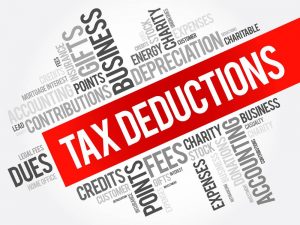Preparing For The VAT Rate Change In Ireland
Temporary VAT rate change
The standard rate of Irish VAT will be temporarily reduced from 23% to 21% for a six-month period from 1 September 2020 to 28 February 2021.
This is the first change to the standard VAT rate in Ireland since 2012 (when the rate increased to 23% from 21%).
The standard rate of VAT applies to broadly 50% of activity in Ireland and to a wide range of goods and services including for example, the sale of motor vehicles, adult clothing, alcohol, electrical goods, most household goods, non-basic foods stuffs, many e-services, professional services and telecommunications.
How does the change impact me?
The breadth of the application of the standard rate means the majority of traders in Ireland will need to consider the impact on their business and changes to systems to implement the VAT rate reduction.
You should consider how the change will impact your business and any actions you need to take between now and 1 September to ensure that you are ready for the change.
Typical issues that businesses need to consider
Issue | What to consider? |
|---|---|
Systems | Do you know what steps are required to update your systems for the VAT rate cut? Depending on the particular systems, this may either be a simple task or in other cases may involve significant work on tax codes and tax determination logic, potentially across multiple systems. Many businesses may already have had a 21% VAT code on their systems from prior years – however they will need to check whether this code continues to function correctly in terms of calculating VAT and including that VAT in the relevant ledgers and reports. Can the systems changes be easily reversed when the rate increases again? |
Pricing | Should you factor the VAT rate cut into your pricing? This is particularly relevant for businesses who set their prices on a VAT-inclusive basis such as retailers or suppliers to businesses with limited VAT recovery. |
Product files | Product files may need to be reviewed and managed noting this is a temporary and not a long-term change. |
Contracts | Do your existing contracts state prices on a VAT-exclusive or VAT-inclusive basis and do you need to engage with any of your suppliers or customers in respect of the VAT rate change? |
Timing | How do you determine if the 23% or 21% rate applies for transactions spanning both periods? Working out the tax point of particular supplies can be complex but will take on increased importance. Relevant factors can include whether the supply is a discrete transaction or a continuous supply, the time that the payment is made, and whether you are selling to a consumer or another business. |
Partially exempt businesses | If your business cannot fully recover VAT, can you maximise the benefit of the VAT rate cut? |
Credit notes | What if you raised an invoice charging 23% VAT but the customer requests a credit note after the VAT rate has changed? This may involve applying the 23% rate during the period of the VAT rate reduction – can your system deal with these scenarios? |
Direct debit | If your business pays VAT to Revenue on a monthly direct debit basis, can the direct debit payment be reduced in light of the VAT rate decrease? |
Advance Payments | How to treat advance payments/payments on account received in advance of the VAT rate change |
Import guarantees | If your business has an import VAT deferment account, can the level of bond or guarantee be reduced to take account of lower VAT import payables? |
Non-Irish businesses | Businesses established outside of Ireland may still be affected by the change. For example, businesses making supplies to Irish consumers of electronically supplied services, broadcasting and telecom services, as well as distance sales of goods to Irish consumers above €35,000 per annum. |
What the change does not cover
It is important to note the VAT rate change will not impact all supplies.
Importantly, the change will not impact the VAT treatment of supplies which qualify for the reduced rate of VAT which remains at 13.5%. This includes many activities in the tourism and hospitality sector such as meals in a restaurant, hotel accommodation, housing and hairdressing as well as general repairs and maintenance.
Source: KPMG

